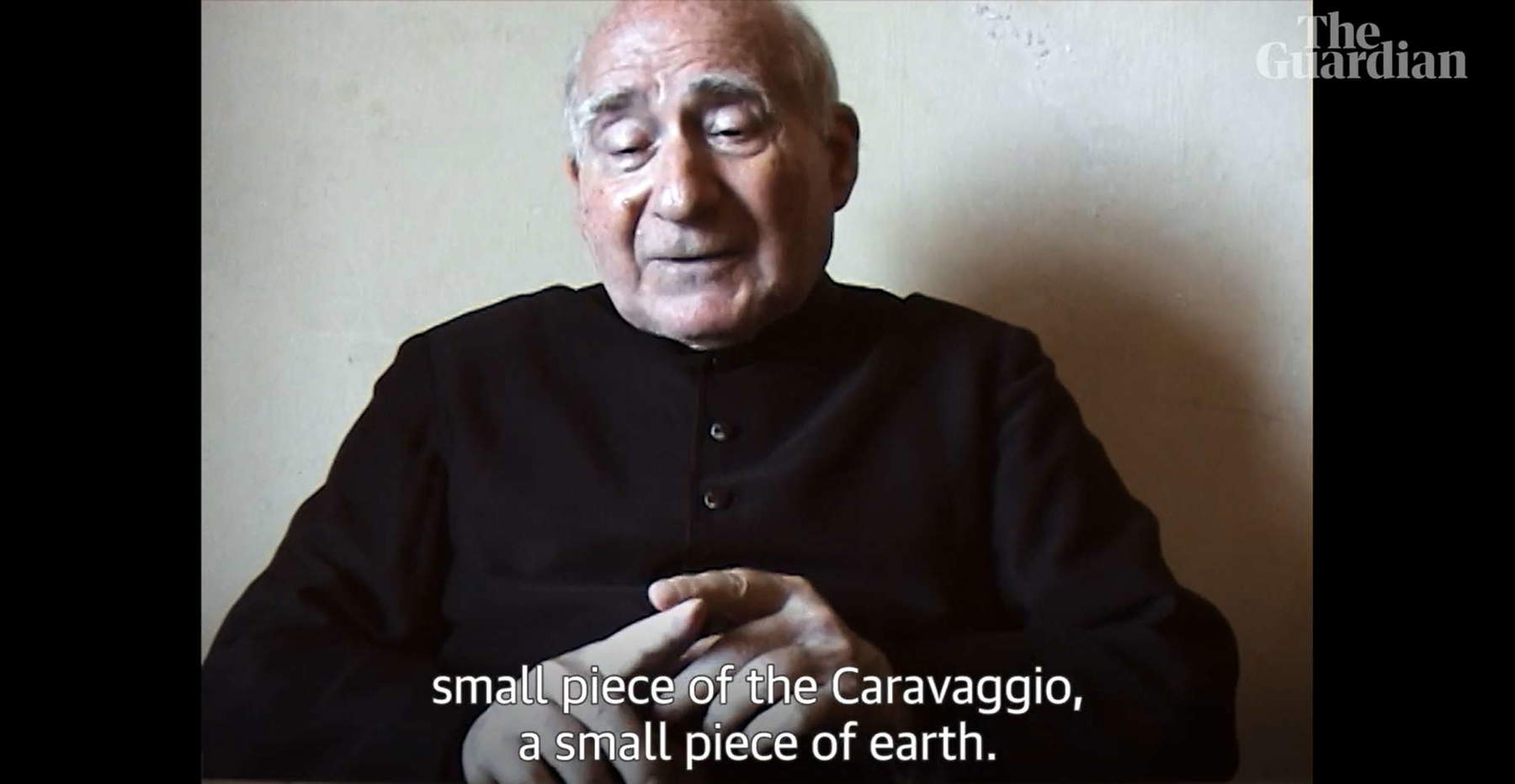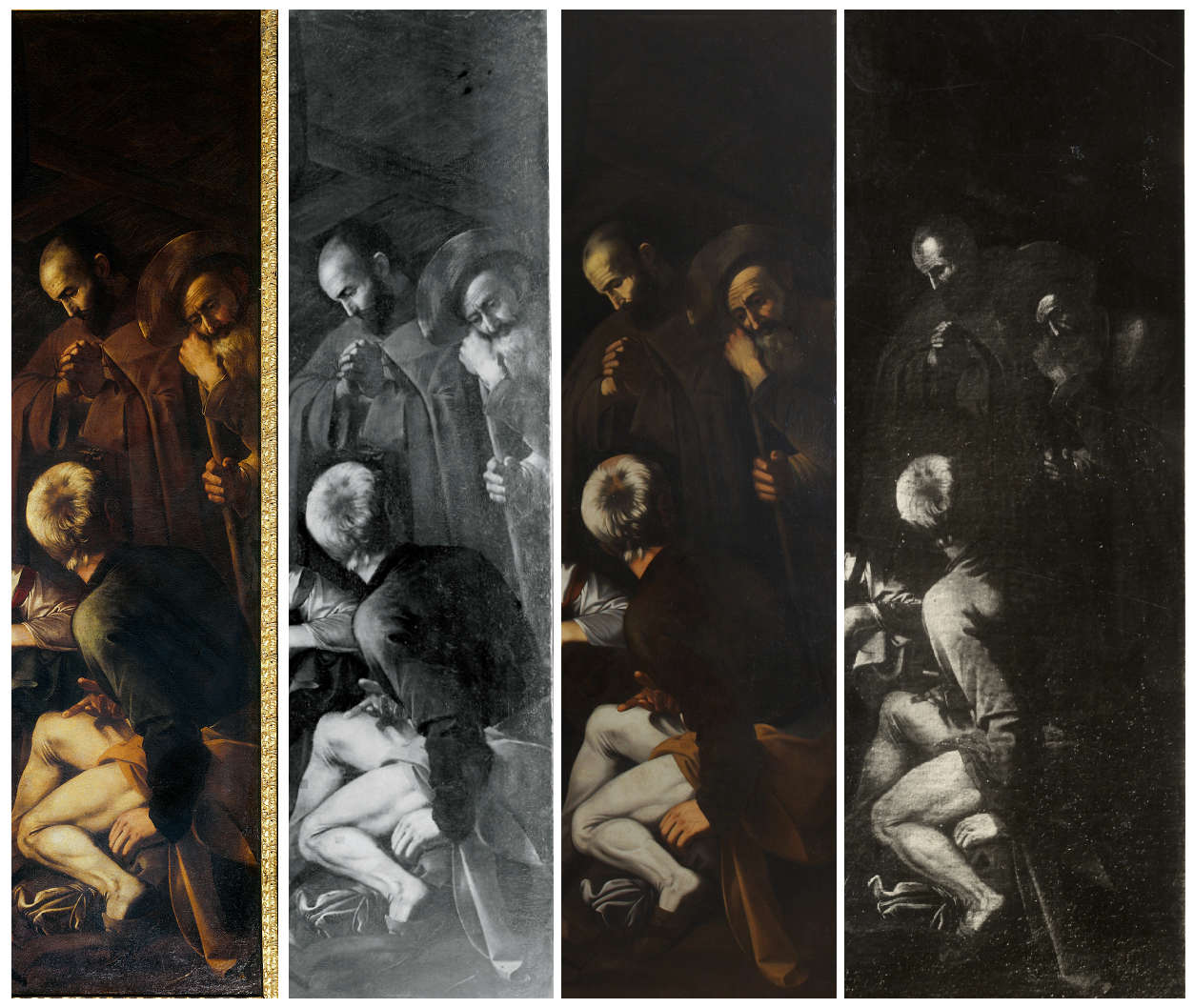“The Caravaggio had been destroyed because ... in the way it had been rolled up, when the buyer was later to ... see it, he started crying and it was ... not. it was no longer in a condition to be used.” It is in the words of justice collaborator Francesco Marino Mannoia one of the saddest possible endings for the Nativity with Saints Lawrence and Francis, painted by Michelangelo Merisi in Rome in 1600 and stolen in October 1969 from the oratory of San Lorenzo in Palermo.
It is now possible to listen for the first time, on the YouTube channel Caravaggio TV, to that entire isolated passage of the deposition given by the former mobster in the Rebibbia prison bunker room. It was November 4, 1996, the Andreotti trial was taking place and PM Roberto Scarpinato asked Mannoia if Pippo Calò knew the life senator. The latter, in the words of the questioner, “was crazy about a painting” that Mafia leader Stefano Bontate allegedly tried to acquire for him.
From a question from the prosecutor having quite a different subject, Mannoia found himself retracing a past that was far from the image of an exponent of a certain depth within Cosa Nostra. He, in fact, confessed that in his youth he had been a thief, although he had been involved in commissioned art thefts, sometimes even excellent ones such as, precisely, the one perpetrated in the oratory of San Lorenzo.
In any case, it was better understood in the course of the trial, it would actually have been a canvas by Gino Rossi that was the painting that would have piqued Giulio Andreotti’s interest (who, with his usual irony, when asked by journalists replied, “I guess I’ve never been crazy about anything, let alone a painting”). Nor will this be the place to illustrate, albeit briefly, the story of the theft of the Nativity, for which allow us to refer to the essay “Caravaggio, the Nativity of Palermo. Birth and Disappearance of a Masterpiece” (third edition 2023).

Today it makes quite an impression to hear again from the living voice of Marino Mannoia, almost forty years later, those first public statements about the painting’s disappearance. Not the first ever. In November 1989, the turncoat had reported the same things to Giovanni Falcone, in the presence of former police commissioner Maurizio Ortolan, who remains its only living witness: that first interview was not verbalized. But in 1996, in front of journalists, all this had an immediate, huge media resonance, and at that point the Carabinieri of the Heritage Protection Command, having learned the news, launched sweeping investigations as never before.
In 2017, hopes for a full recovery of the altarpiece were rekindled. Questioned as part of the related inquiry by the Parliamentary Anti-Mafia Commission, while still admitting involvement in the theft of the work, Mannoia denied that he had then made it disappear forever: “We destroyed the painting by cutting it into pieces with knives and setting it on fire after dousing it with gasoline in the immediate vicinity of the Oreto River,” he had told Carabinieri on Nov. 7, 1996.

Frequently recurring and thought-provoking is the theme of cutting the work. On re-reading the October 1969 chronicles, it appeared almost certain that the canvas had been removed by cutting it all around with a razor blade. Contextually, it was feared that it would have been divided into several portions to be placed separately on the market, and an expert from the Palermo nucleus of the Criminalpol, Giovanni Console, speculated that these would have framed “the deliciously illuminated face of the Madonna, the angel and the little heads of the two Saints in adoration.” Yet, the characters depicted are all so close together that it would be difficult to isolate a significant portion of one without intercepting some detail of another.
Nonetheless, according to recent statements by court collaborator Gaetano Grado, at some point that eventuality materialized. Boss Gaetano Badalamenti, having recovered the Nativity from the gang of thieves who had stolen it without asking the Mafia’s permission, worked to find a buyer and found it in an elderly antiquarian in Canton Ticino. The painting would arrive whole across the Alps and was later, so the Swiss man told Badalamenti, “cut into four parts and sold.”

On the other hand, in a modus operandi similar to that of kidnappings, some time after the theft a fragment of canvas was sent by unknown persons, self-styled holders of the stolen masterpiece, inside a letter received in the oratory by rector Fr. Benedetto Rocco. “A small piece of canvas,” is how Rocco described it in a video interview given in 2001-2002 to director Massimo D’Anolfi, while pointing to the tip of his index finger to make it better on size. But did it really belong to the Nativity? And what happened to it?
The concept of the cutting of the work, paradigmatic of the wound inflicted on the community with this heinous crime, continues to shake the conscience, to the point of becoming inspirational. Such was the case for Spanish artist Javier Carpintero, who in 2023 mounted his Caravaggio desmembrado at the Oratory of San Lorenzo. A faithful copy of the Nativity painted in oil, then broken down into squares, framed and arranged as if floating around the frame that housed the Caravaggesque original until its darkest night. Symbolic tiles in an intricate puzzle that this whole story is, a work that we would love to see exhibited again.

According to art critic Maurizio Calvesi, who took up a thesis of colleague Roberto Longhi, a cut the Nativity would have been made before the theft. This would explain why the figure at the far right, the shepherd, appears “stumped.” The height of 12 Roman palms (268 cm) stipulated in the commission contract was slavishly respected, but this was not the case for the width as well. The latter, in fact, was given generically as "7 or 8 palms in about," so it was expected that it could reach at least 179 cm (always with some margin of tolerance), while the actual width of the canvas was measured at 197 cm. Whether Caravaggio, or whoever prepared the canvas for him, moved cautiously in the face of this indeterminacy on the part of the commission, leaving a few extra centimeters of fabric? If, then, there was ever a curtailment of the support, when would it have occurred? In the course of an ancient remodeling as Maurizio Marini speculated? From documents discovered by Giovanni Mendola it is clear that in the year 1600 the arrangement of the altar of the oratory of San Lorenzo was being defined, which from Rome Merisi could not have known about, and which moreover was redone close to the year 1700 by architect Giacomo Amato and sculptor Giacomo Serpotta.

The final word, as always, is up to the technicians, and Claudio Seccaroni and Elisabetta Giani, who examined the x-rays taken on the painting in 1951, ascertained that there was no reduction in size on the right side of the canvas. It is, however, interesting to compare the painting without the frame and thus in its full layout, as seen in a shot taken by the Central Institute for Restoration in 1951-1952, with the two ancient copies: the one by Paolo Geraci dated 1627-1628 (Catania, Museo Civico “Castello Ursino”) and the other of unknown author and date, which belonged to Luigi Federzoni and is now lost, which we know through a shot from Roberto Longhi’s photo library. While the former is a 1:1 reproduction of the original, in the latter the anonymous author painted “freehand” and took some licenses, such as enlarging the background. Well, the impression one gets by comparing the photographs is that some details absent in the Palermo Nativity are present in the copies with a very similar outline: see, in particular, the back of St. Joseph and the neck of the shepherd.
Much will still be said and written about the Nativity, and not everything can be confirmed or denied until there is the much hoped-for discovery of the painting. Possibly intact.
Warning: the translation into English of the original Italian article was created using automatic tools. We undertake to review all articles, but we do not guarantee the total absence of inaccuracies in the translation due to the program. You can find the original by clicking on the ITA button. If you find any mistake,please contact us.